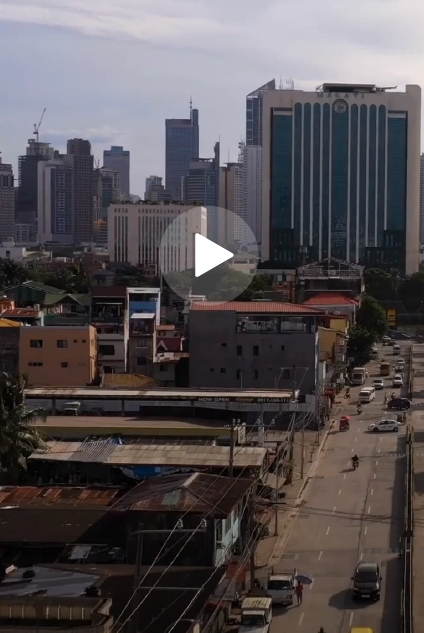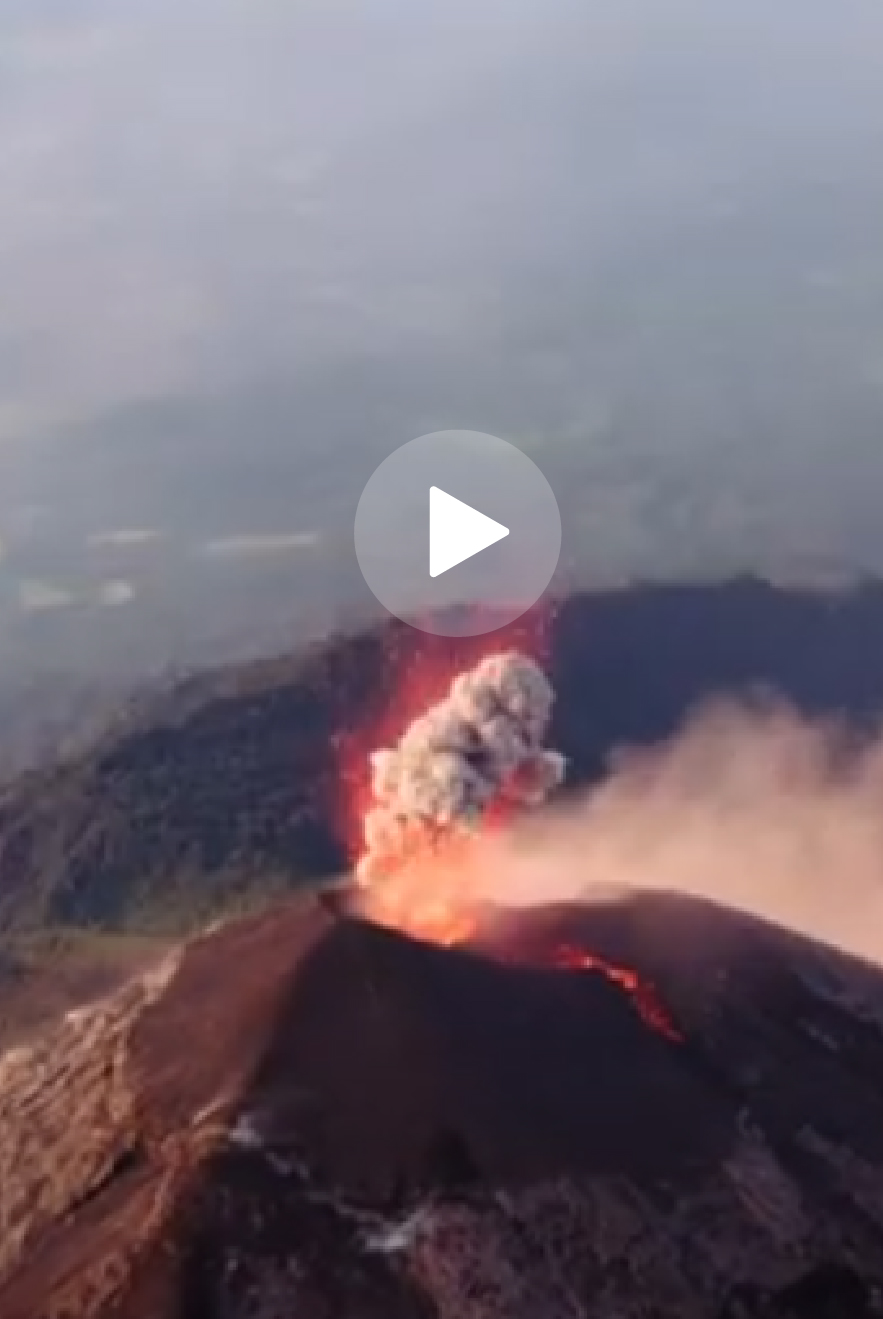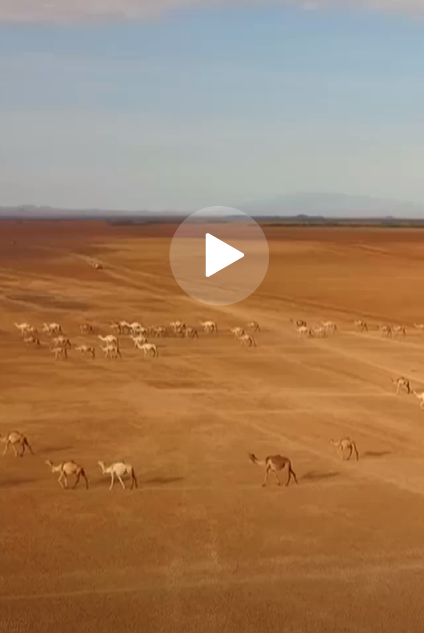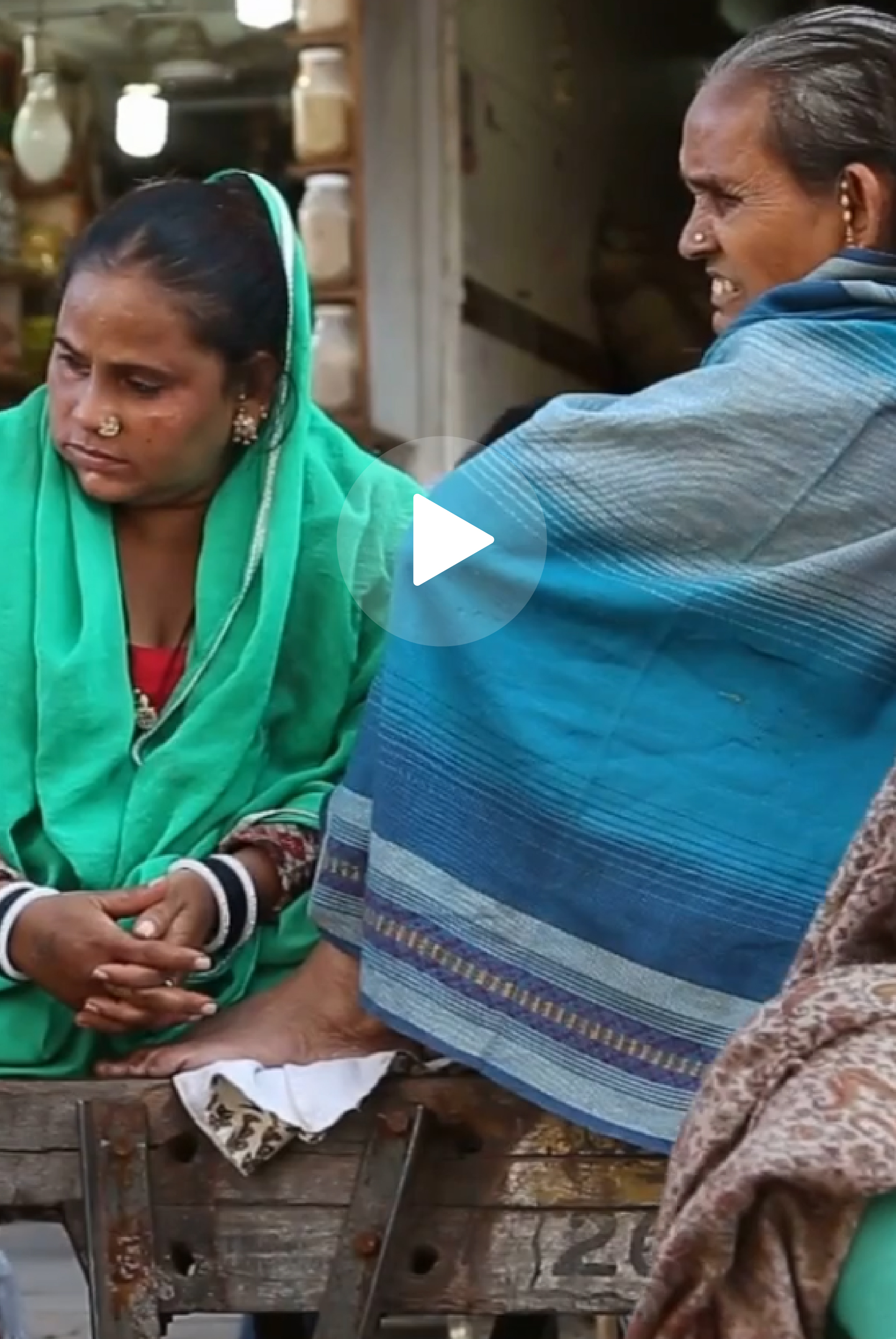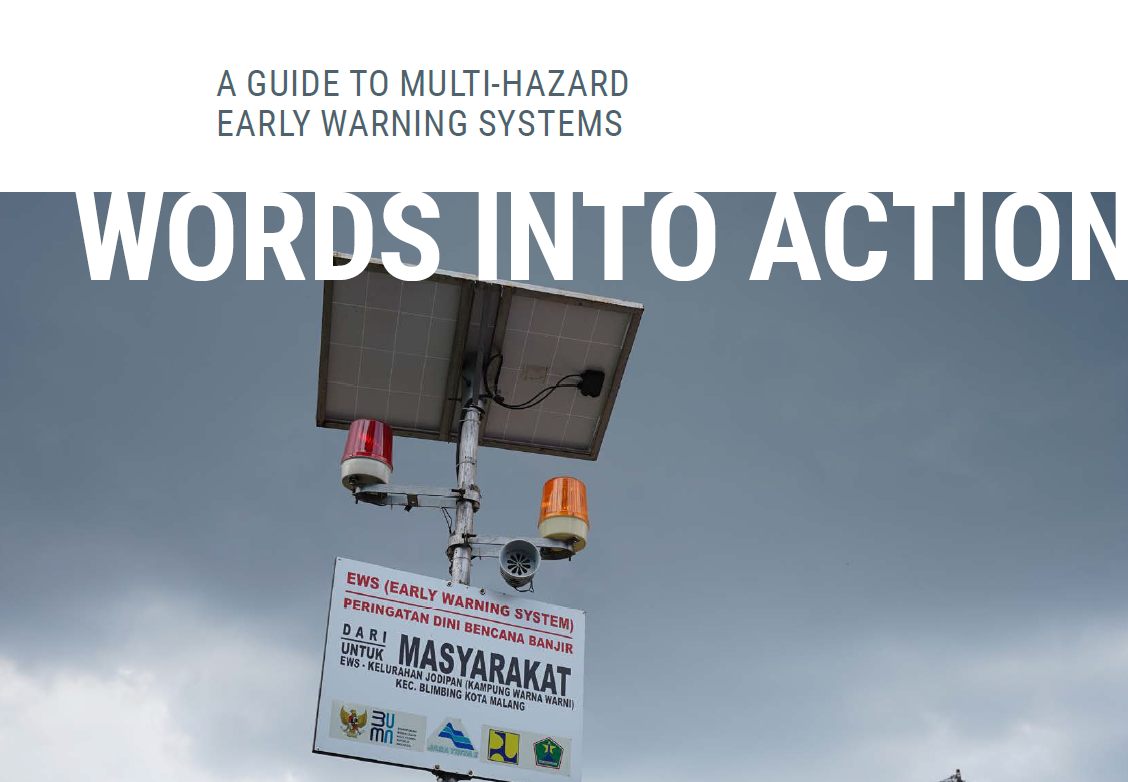
The United Nations Office for Disaster Risk Reduction (UNDRR) launched the Words into Action (WiA) publications as a series of guidelines, based on global expertise, communities of practice and networks of disaster risk reduction (DRR) practitioners. They provide practical, specific advice on implementing a people-centred approach to DRR in line with the Sendai Framework for Disaster Risk Reduction 2015–2030.
Early warning systems include the following four key and interrelated components:
- Disaster risk knowledge based on systematic collection of data and disaster risk assessments.
- Detection, monitoring, analysing and forecasting of hazards and possible consequences.
- Dissemination and communication, by an official source, of authoritative, timely, accurate and actionable warnings, and associated information on likelihood and impact.
- Preparedness at all levels to respond to the warnings received.

Read
Community co-design for early warning systems in Tanzania
Informal settlements in Dar es Salaam are susceptible to extreme weather events such as flooding, increased temperatures, droughts, and extreme and inconsistent rainfall. Sunayana Sen discusses the community-led approach of DARAJA, a partnership that aims to improve weather and climate information services, including early extreme weather warnings for urban users.

Public-private partnerships in Senegal
Senegal is frequently affected by climate-related natural disasters. The country’s National Agency of Civil Aviation and Meteorology partnered with the start-up Jokalente to develop innovative communications technology to engage hard-to-reach populations, improved through community consultations.

Listen

Our podcast explains the importance and application of multi-hazard early warning systems in providing early warning for all.
Geospatial and space-based data and information are increasingly contributing to multi-hazard early warning system design, routine operation and improvements as new sources become available. In the case of floods, tsunamis and storm surges, the most up-to-date geospatial information allows experts to model how these hazards will propagate inland, and determine evacuation routes and safe areas, including temporary shelters.
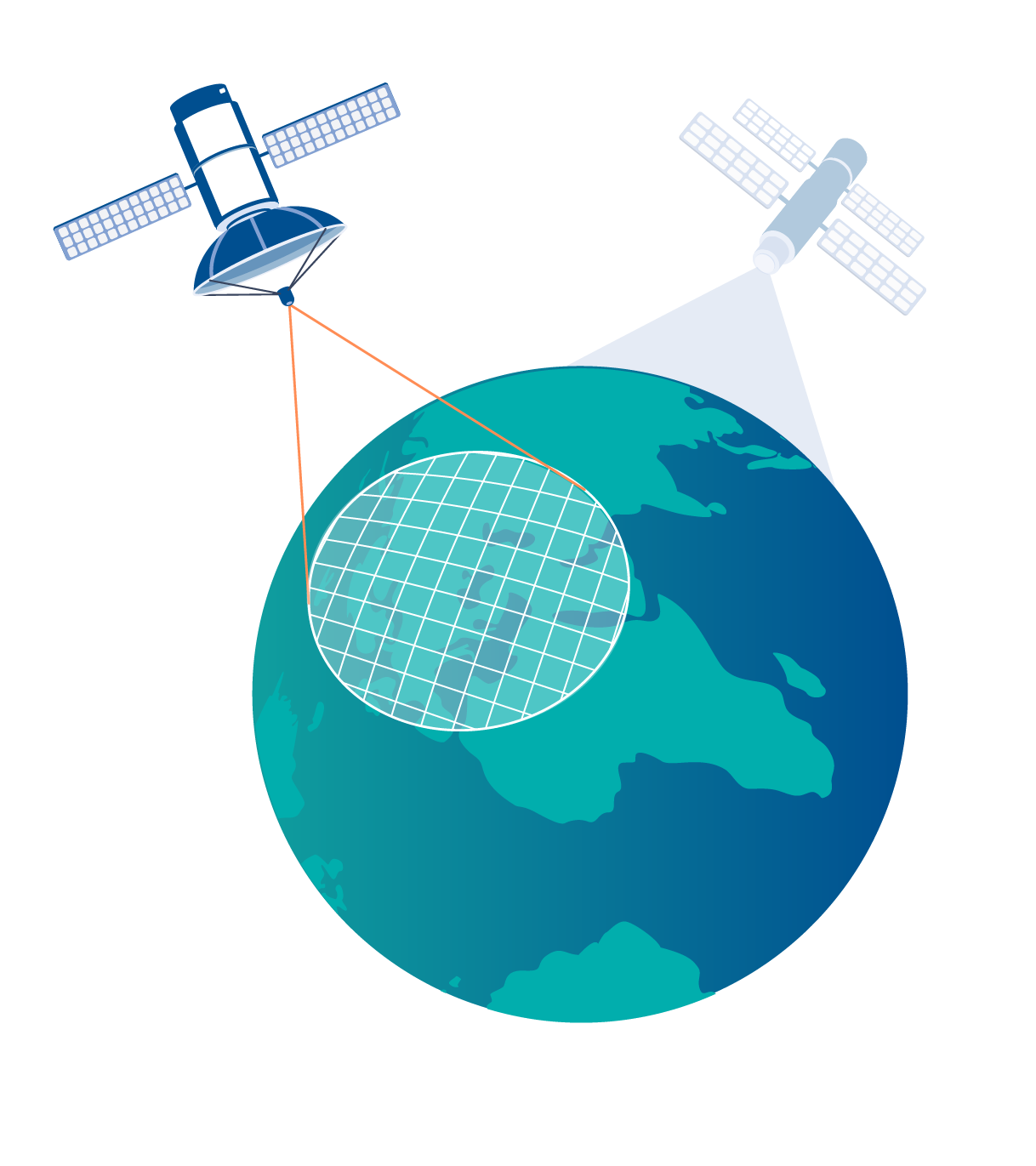
Earth observations from satellites:
- Location of urban and rural areas exposed to tsunamis
- Location of critical infrastructure, road networks on coastal areas, other types of infrastructure exposed to tsunamis, as well as industrial, commercial, touristic, educational, health, housing, financial, religious and cultural facilities in areas exposed to tsunamis
- Identification of potential evacuation routes and safe areas
Satellite telecommunications:
- Data transmission: Used for the transmission of data from sensors deployed in remote areas and from buoys at sea to regional tsunami watch centres
- Transmission of texts: WMO has allowed for the use of meteorological satellites to transmit information about tsunamis within continents and from one continent to another
Global Navigation Satellite Systems:
- Geographic location of critical infrastructure, road infrastructure (bridges), buildings, industrial facilities
- Assessment of the magnitude of strong earthquakes
At-risk groups most likely to be affected by disasters include:
- communities in high-risk areas;
- rural populations that depend on weather and climate conditions for their livelihoods;
- segments of communities systematically barred from participation including women and girls and Indigenous Peoples;
- poor urban dwellers in underserved informal settlements;
- persons with disabilities; and highly dependent children and older persons.

Explore

Watch
Explained: Multi-hazard early warning systems
Just 24 hours’ warning of a coming storm or heatwave can cut the ensuing damage by 30%, yet one third of the world’s population are still not covered by early warning systems. This primer explains why substantially increasing the availability of and access to early warning systems is vital.

There is a 100% chance of a tsunami of at least 1 meter occurring in the Mediterranean in the next 30–50 years. The IOC UNESCO CoastWAVE project, funded by the EU DG-ECHO, is piloting 7 Tsunami Ready communities by providing technical support, detection and alert systems, and trainings to the countries across the region.
A science- and community-based early warning system in the Philippines
In Makati, early warning systems are being strengthened in close partnership with scientific institutions and local communities, with a life-saving impact.
Early warning for heavy rains in Japan
Many people live in areas of Japan prone to landslides, inundations and floods. KIKIKURU, developed by the Japan Meteorological Agency, disseminates weather warnings through multiple channels so that individuals and communities can protect themselves.
Early warning systems: Why we need them
Over the past decade, 206 million people were affected annually by extreme climate change events. Inclusive, accessible, people-centred multi-hazard early warning systems can substantially decrease the number of people affected by disasters, minimize disruptions and reduce economic losses.
Early Warnings For ALL (EW4ALL)
The UN Secretary-General has called for every person on Earth to be protected by early warning systems within five years by 2027.
Heeding warnings: Good practices on multi-hazard early warning systems
Somalia is highly vulnerable to floods, droughts and storms. The country’s National Emergency Operations Centre provides early warnings, disseminating information through radio, television, SMS and websites.
Mobile networks and early
warning systems
A simple text message could save your life. During major floods in July 2021, Belgium sent around 2 million location-based SMS messages.
Using voice messaging to convey early warning systems for illiterate communities
How can early warnings reach people who cannot read? In Senegal, a country vulnerable to an increasing number of climate-related hazards, the National Agency of Civil Aviation and Meteorology and start-up Jokalente have developed an ambitious voice-based early warning system.
Women leading early warning systems in India
Women play a critical role in community preparedness. Odisha has become the first Indian state to have an early warning system in place for people living along its coastline, in a project designed and led by women.
News updates

When women are actively engaged in the development and implementation of disaster management laws, policies and operational plans and procedures, and multi-hazard early warning systems identify and address the diverse needs of women, disaster risk reduction efforts become more inclusive and accessible, and ultimately more successful.


